Papua New Guinea Provinces
MADANG
PROVINCE
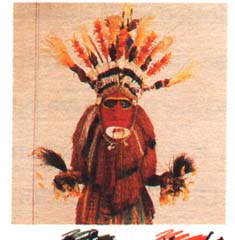 The most popular location in Papua New Guinea for divers,
Madang Province consists of reef-fringed
lowlands backed by some of the most rugged
mountains in Papua New Guinea and offshore
volcanic islands. The most popular location in Papua New Guinea for divers,
Madang Province consists of reef-fringed
lowlands backed by some of the most rugged
mountains in Papua New Guinea and offshore
volcanic islands.
Colourful Madang township
has been called the "prettiest town
in the South Pacific". It's peninsula
setting is a show-place of parks, waterways,
luxuriant shade trees and sparkling tropical
islands. Although small, the town has modern
urban facilities, including hotels, department
stores, markets and artefact shops. There
are five hotels in Madang - The Madang Resort
Hotel, Smugglers Inn, Jais Aben Resort,
Malolo Plantation Resort and Madang Lodge
Motel, all of which provide excellent facilites.
There are few budget guest houses and lodges
around Madang and some small village guest
houses on several of the islands on Madang
lagoon.
The area is world famous for
its coral reefs and superb visibility making
diving good all year round. There is a variety
of easily accessible places to dive, an
abundance of reef and pelagic fish, dramatic
drop offs, shells and soft and hard corals.
Those who like diving on wrecks
will find the reefs liberally dotted with
sunken ships. Hansa Bay, the resting place
for at least 34 Japanese ships, is within
striking distance up the coast. Ships lie
in shallow water and are now covered in
corals and fish. Jais Aben Resort, just
outside Madang, is a combination research
station and resort hotel specially catering
for divers. Diving instruction in Madang
is available at Jais Aben Resort, Madang
Resort Hotel and Smugglers Inn.
Game fishing is a popular
sport and the coastal currents around Madang
Province carry sailfish, kingfish, tuna,
mackerel, barracuda, marlin, yellow fin
and wahoo within 100 metres of the shore
providing anglers with plenty of good sport.
Fishing is especially good off the waters
around Karkar and Bagabag islands.
The two volcanic islands of
Manam and Karkar have volcanic cones rising
1800 metres above sea level and provide
a spectacular sight for visitors.
A variety of local markets
sell artefacts, shell jewellery, carvings
and pottery. Tours can be arranged to visit
the nearby villages of Bilbil and Yabob
to see traditional clay pots being made
or you can explore Madang Harbour with a
morning harbour cruise. The South Coast
road leads to the Balek Wildlife Sanctuary,
with has strange fish-filled sulphurous
caves, jungle walks, and hot springs. The
Sanctuary was also location for filming
scenes in the Pierce Brosnan movie "Robinson
Crusoe".
Madang hosts the Mabarosa
Festival each year, a colourful display
of dancing, singsings and bamboo bands.
Papua New Guinea's largest
tour operator, Melanesian Tourist Services
(MTS) is located in Madang. They operate
the MV "Melanesian Discoverer"
and the Madang Resort Hotel. The "Melanesian
Discover" is a luxury 42 passenger
catamaran operating scheduled cruises from
Madang, offering five day Sepik River cruises
and one week cruises to the Trobriand Islands
in Milne Bay Province.
Madang is serviced by daily flights from
Port Moresby via Lae and the Highlands and
has a number of locally based third level
airlines servicing small airstrips in the
province. Helicopter charters can also be
arranged. adang is also linked by road to
Lae and the Highland provinces.
Map of Madang
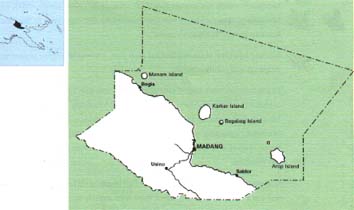
MANUS
PROVINCE
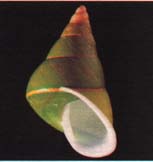 Manus is Papua New Guinea's smallest province, both in terms
of land mass and population, but has a vast
sea area rich with marine life and beautiful
coral reefs. Manus is Papua New Guinea's smallest province, both in terms
of land mass and population, but has a vast
sea area rich with marine life and beautiful
coral reefs.
The province consists of a
group of islands, known as the Admiralty
Islands and a scattering of low lying atolls,
mostly uninhabited, with the northern border
reaching the equator.
The reefs near the atolls
are accessible by outboard motor or canoe
and provide superb diving and fishing. The
adventurous and athletic can enjoy sea kayaking,
a sport fast becoming popular among the
seafaring community of Manus. Sea kayaking
tours can range from day trips to a seven
day tour, giving visitors the opportunity
to enjoy the marine life, the water ways
and the scenery of Manus.
Manus, the largest of the
islands, is rugged and heavily timbered
with central hills rising to over 700 metres
and many sharp ridges and streams. The airport
is in Momote on Los Negros Island. A good
road connects Los Negros to the main town
of Lorengau on Manus Island.
The islands are connected
by a bridge crossing the Loniu Passage.
There is a pleasant waterfall and a fresh
waterpool on the Lorengau River a few kilometres
upstream from Lorengau town.
During World War 2, Manus
was occupied by the Japanese and later by
American and Australian armed forces, who
spent millions of dollars constructing a
huge base, airport and dock facilities at
Seeadler Harbour. During wartime activity
up to 600 ships anchored in the harbour.
Today it is a peaceful place ringed by small
islets and a magnificent reef. The rusting
remains of the base can still be seen nearby.
A variety of hotels, lodge
style accommodation and village guest houses
are available, including the Lorengau Kohai
Lodge, the Andra Guest House and the Harbour
Side Hotel, all of which provide comfortable
facilities for visitors.
Map of Manus
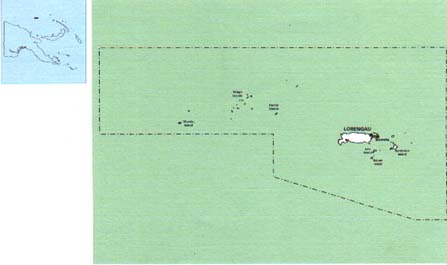
MILNE
BAY PROVINCE
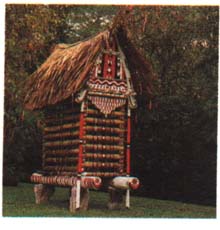 Milne Bay Province takes in the land at the extreme eastern
end of Papua New Guinea together with seven
groups of islands, the Trobriand, Woodlark,
Laughlan, Louisiade Archipelago, the Conflict
Group, the Samarai Group and the D'Entrecasteaux
Group. The names come from a variety of
explorers from as early as 1660 when D'Entrecasteaux
sailed through and left his name behind. Milne Bay Province takes in the land at the extreme eastern
end of Papua New Guinea together with seven
groups of islands, the Trobriand, Woodlark,
Laughlan, Louisiade Archipelago, the Conflict
Group, the Samarai Group and the D'Entrecasteaux
Group. The names come from a variety of
explorers from as early as 1660 when D'Entrecasteaux
sailed through and left his name behind.
Over the years, Milne Bay
Province has been visited by missionaries,
miners, traders in pearls, scientists and
Japanese and American warships. During the
war Milne Bay became a huge naval base through
which hundreds of thousands of servicemen
passed.
Today thousands of tourists
arrive to enjoy diving around the wreckage
left behind from the war. There are 160
named islands and 500 cays and atolls scattered
over 250,000 square kilometres of ocean.
In many parts of Milne Bay, the reefs are
characterised by dramatic drop-offs, clefts
and overhangs.
The most comfortable way to
enjoy Milne Bay diving is aboard one of
the live-aboard dive boats based out of
Alotau, the provincial headquarters. The
60 foot MV "Chertan" can comfortably
accommodate up to 14 divers. Built in 1992,
it is equipped with the latest electronic
equipment, video and stereo systems. The
MV "Telita" was Papua New Guinea's
first live-aboard dive boat and was designed
specifically as a live-aboard diving vessel.
It has five twin-berth cabins, sophisticated
electronic equipment, a bar, video, stereo,
a well-equipped library and a charging console
for photographers.
Alotau, spectacularly sited
on the edge of Milne Bay is a good base
for visiting the outlying islands. Fergusson
Island has an active thermal region, hot
springs, bubbling mud pools, spouting geysers
and volcanoes. Misima Island was the scene
of a 1930' gold rush from which a major
mine has now been developed. Woodlark Island
is populated by people of Melanesian ancestry.
The islanders are renowned for their expertly
crafted wood carvings.
One of the best locations
to enjoy the charms of the friendly and
peace loving Milne Bay people is the Trobriand
Islands. Their unique social system is dominated
by hereditary chieftains who continue to
wield tremendous power and influence, although
inheritances and lines of power are passed
through the female side of the family. From
June - August the Milamala yam harvest festival
is held. The Milamala starts with a procession
of men carrying the newly harvested yams
from the garden storage hut to the village
yam houses while the women ahead sing and
dance. During the festival time, traditional
rites are observed. It was from Malinowski's
anthropological studies of the customs and
sexual practices during this time that The
Trobriand's became known as "The Islands
of Love".
Fresh water caves are found
all over Kiriwina island. Near Matawa Village
there are several deep limestone caves housing
burial antiquities and skeletal remains.
At Wawela
there is a beautiful curving
beach on a cool, deep lagoon. The village
children fishing from their outrigger canoes
are happy to give visitors a ride out to
the reef to enjoy snorkelling. Visitors
should bring their own snorkel or dive gear
to Kiriwina as availability at the lodges
is not constant.
Kiriwina Lodge offers basic
accommodation, excellent seafood and will
organise day trips.
The Trobriand Islanders will
offer for sale their beautifully carved
walking sticks, figurines, fish and turtle-shaped
bowls made from local timbers including
the much sought after ebony.
Map of Milne Bay
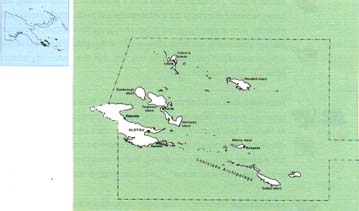
MOROBE
PROVINCE
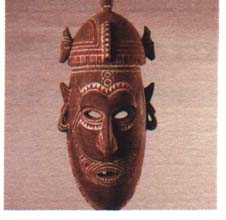 Morobe Province curves around the tropical waters of the
Huon Gulf. The Saruwaged Mountains, rising
from the sea at the tip of the Huon Peninsula
are blanketed by tangled and impenetrable
rainforest. To the south-west, the fertile
Markham Valley rests between equally awesome
ranges while the waters between Huon Peninsula
and New Britain are dotted with volcanic
islands. Morobe Province curves around the tropical waters of the
Huon Gulf. The Saruwaged Mountains, rising
from the sea at the tip of the Huon Peninsula
are blanketed by tangled and impenetrable
rainforest. To the south-west, the fertile
Markham Valley rests between equally awesome
ranges while the waters between Huon Peninsula
and New Britain are dotted with volcanic
islands.
The hinterland and coast of
Morobe Province offers spectacular sightseeing,
a wonderland of flora and fauna and numerous
walking tracks, particularly near the Wau/Bulolo
areas. A network of roads connects the capital
city of Lae with Madang to the north west,
through the Markham Valley to the Highlands
in the west and south to the Highland areas
around the Wau and Bulolo.
Lae, the second largest city
in Papua New Guinea was a tiny mission station
before the 1920's gold rush at Wau transformed
it into a major port and industrial centre.
It was the last place to farewell famous
pioneering American aviator Emelia Earhart,
as she took off on one of the final legs
of her round the world flight before disappearing
without a trace. Lae was a strategic base
for the Japanese during World War 2. The
graves of thousands of allied soldiers killed
during battle can be visited at the Lae
War Cemetery, situated within the grounds
of Lae's Botanical Gardens.
A tour through the Gardens
provides the visitor with a glimpse of life
in the rainforest. Huge trees smothered
in vines and creepers are home to brightly
coloured birds and lizards and a display
of exotic orchids. More recently the Rainforest
Habitat, occupying an area of over 3,000
square metres, has been purpose built to
create a display of some 15,000 native and
exotic plants, 21 species of birds including
the magnificent Raggiana Bird of Paradise
as well as crocodiles, lizards, butterflies,
turtles, frogs and fish.
Known as the "Garden
City" modern day Lae is an attractive,
tropical city well serviced by banks, international
standard hotels, department stores, local
markets and street stalls selling produce
and artefacts. A good collection of artefacts
including sand paintings can be seen at
the Melanesian Arts Centre and the Morobe
Arts and Handcraft shop. The Lae University
of Technology also has an artefacts collection
of rare and valuable pieces, Sepik carved
pillars and a coffee shop built in traditional
"haus tambaran" style.
Further afield, is the town
of Finschhafen, first settled in 1885 by
the Germans and still a majorLutheran base.
Salamaua Beach to the south has excellent
swimming, diving, windsurfing, trekking
and tours of battle sites, tunnels and war
relics. The Labu Lakes across the Markham
Valley are home to crocodiles while the
beaches on the ocean side around Maus Buang
and Labu Tali are breeding sites for the
leatherback turtle, weighing up to 500kg
and measuring up to two metres in length.
Daily Air Niugini flights
connect Lae with most major centres, while
second and third level airlines fly regularly
from smaller towns. As the Port of Lae services
both international and coastal shipping
it is possible to reach most northern coastal
centres by boat.
Map of Morobe
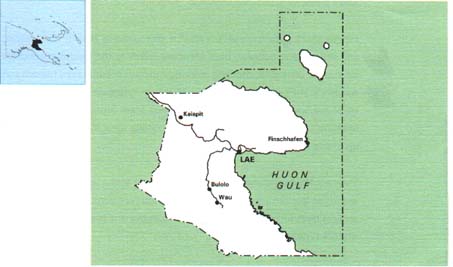
PORT
MORESBY, NATIONAL CAPITAL DISTRICT AND CENTRAL
PROVINCE
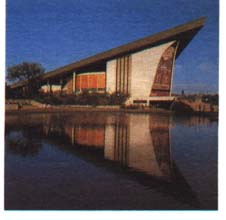 Port Moresby, the nation's capital and the main entry point
for international visitors does not present
an immediate picture of an ideal tropical
paradise. During the winter months it is
dry, dusty and brown. Summer is wet, humid
and overgrown. It is a place of stark contrast.
Ramshackle huts sit alongside glistening
glass towers, dusty plains turn corners
to expose a glittering harbour and fearsome
frowns turn to welcome smiles. Port Moresby
opens the door to the "land of the
unexpected". Port Moresby, the nation's capital and the main entry point
for international visitors does not present
an immediate picture of an ideal tropical
paradise. During the winter months it is
dry, dusty and brown. Summer is wet, humid
and overgrown. It is a place of stark contrast.
Ramshackle huts sit alongside glistening
glass towers, dusty plains turn corners
to expose a glittering harbour and fearsome
frowns turn to welcome smiles. Port Moresby
opens the door to the "land of the
unexpected".
The city is located in an
area called the National Capital District
or NCD. It is on the southern coast of the
country and surrounds part of Fairfax Harbour.
Port Moresby was named by Captain John Moresby
in 1873. The following year a mission station
was established at the village of Hanuabada,
a traditional Papuan village and home to
the Motuan people.
During the Second World War,
the small town of Port Moresby was transformed
into a large military camp, accommodating
tens of thousands of troops during the Pacific
campaigns. At the end of the war Port Moresby
was the only town of any size left standing
in Papua New Guinea and was chosen by the
governing Australian administration to be
the seat of government.
This was the beginning of
the urban drift that brought people from
almost every tribal group of Papua New Guinea
to the city as well as attracting a large
population of foreigners. It is now a cosmopolitan
city, embracing 20th century technology
and development while trying to retain the
traditional values of its varied population.
It is a blend of old and new.
Remnants of the colonial days can still
be found in downtown Port Moresby and elements
of traditional life have been maintained
in the nearby villages. After being destroyed
during the war, Hanuabada was rebuilt in
the traditional style with its houses perched
on stilts over the water. Parliament House
exemplifies the striking harmony of modern
architecture and traditional design. The
National Museum and Art Gallery exhibits
cultural features of Papua New Guinea's
complex tribal lifestyles.
The annual Hiri Moale festival
held every September celebrates one of the
epic trading voyages between central province
villagers and the people in the Gulf of
Papua. It is a three day festival of traditional
dance, singing and drama. During the festivities,
Port Moresby's Ela Beach is lined with stilt
houses, canoes and swaying dancers decorated
with leis of frangipani and hibiscus.
In June people come from far
and wide to take part in the singsing at
the Port Moresby Show. It is a wonderful
opportunity to experience and capture on
film the colour and vibrancy of Papua New
Guinea.
Equally colourful is the display
of native orchids found at the National
Botanical Gardens. The collection of over
three thousand orchid species, unique to
Papua New Guinea, is the largest in the
Southern Hemisphere. They flower all year
round with peak flowering season for most
orchids between December to March.
Surrounding the National Capital
District is Central Province, a narrow coastal
strip which rises to the 4000 metre high
Owen Stanley Ranges which form its northern
border and divides and isolates the Province
from the north. All roads out of Port Moresby
lead to delightful adventure.
Only 46 kilometres from Port
Moresby is the Sogeri Plateau. At 800 metres
the air is cool and pleasant. Sogeri is
the starting point for the famous Kokoda
Trail. Nearby is the Varirata National Park.
Covering an area of 1,000 hectares, it was
the original hunting grounds of its tree-house
dwelling landowners. At certain times of
the day, birds of paradise, wallabies and
deer can be seen along the walking trails.
At the end of the trail the lookout presents
a panoramic view of Port Moresby and the
coastline. The road to Sogeri passes the
historic Bomana War Cemetery and Gardens
and the Moitaka Wildlife Farm, a crocodile
research farm which also has a collection
of native animals and birds. On Fridays
visitors are able to see the crocodiles
at lunch.
Yule Island, two hours drive
west along the Hiritano Highway was one
of the first areas to have European contact.
Catholic missionaries settled here in 1885
and still maintain a presence in the area.
It is a popular spot for peaceful getaways
and seafood delights.
To the east, only fifteen
minutes drive from Port Moresby is Loloata
Island Resort, a popular destination for
Port Moresby residents and a relaxing alternative
for transiting visitors. Surrounded by coral
reefs it offers snorkelling, diving, fishing
and other water sports.
Milne Bay Air operates flights
into the towns of Tapini and Woitape. After
a short flight climbing into the Owen Stanley
Ranges, the light aircraft lands, with little
descent, onto an airstrip cut into the side
of the mountain. These are popular destinations
for bush walking, fishing andrelaxing.
Map of National
Capital
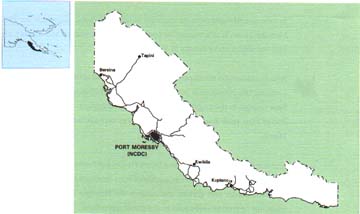
|